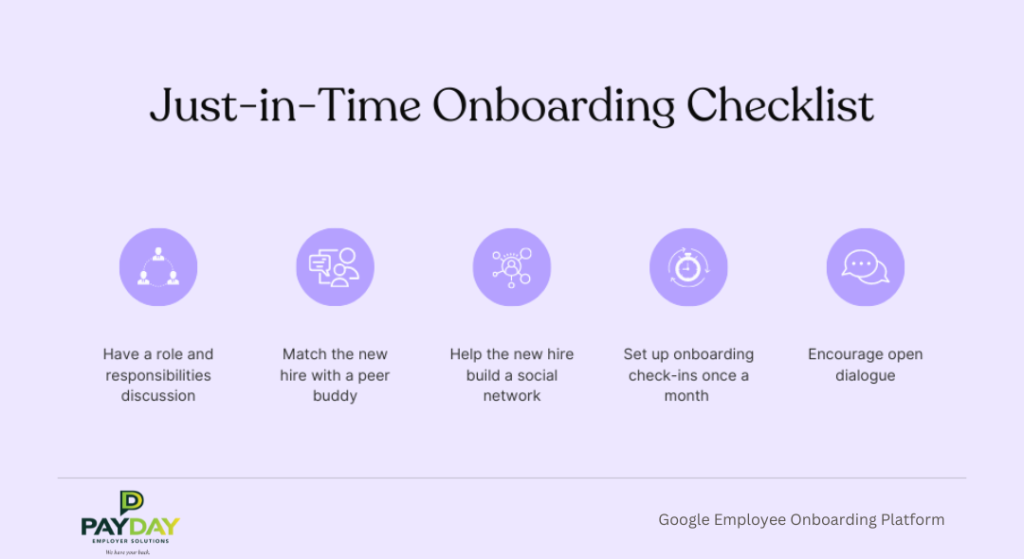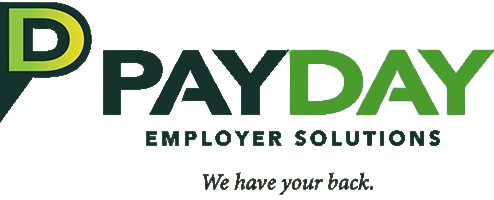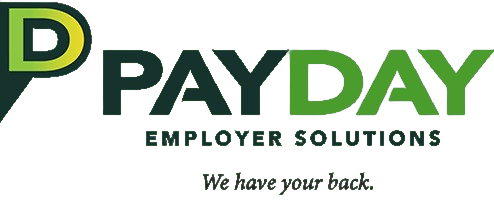Setting the Stage for Successful Employee Onboarding
Imagine this: a new hire joins your team, eager and excited, but within the first week, they’re bogged down by piles of paperwork, unsure of their role, and disconnected from the company culture because your company hasn’t yet adopted onboarding and HR technology to streamline the process. The result? They quickly disengage. However, according to a Glassdoor study, a strong employee onboarding process can change this story, increasing new hire retention by 82%, and 69% of employees are more likely to stay with a company for three years if they had a positive onboarding experience.
These statistics highlight how vital a well-executed onboarding process is in today’s competitive job market. Adopting onboarding technology is a game-changer for companies looking to improve their employee onboarding experience. By leveraging the power of HR technology, businesses can boost retention rates, enhance productivity, and foster greater employee satisfaction, particularly in hybrid and remote work settings.
In this article, we will explore four key benefits of onboarding technology and how it can revolutionize employee onboarding processes. From streamlining tasks through automation to providing better support for remote employees, HR technology offers a modern solution to the challenges of traditional onboarding.
The Importance of Effective Onboarding Technology

Onboarding technology is no longer a luxury; it’s a necessity in modern HR practices. Businesses that fail to adopt these tools often struggle with higher turnover rates and lower productivity from new hires. These tools allow companies to automate time-consuming administrative tasks while focusing on creating a positive and engaging experience for new employees. As a result, HR technology solutions help foster an environment where employees feel welcomed, informed, and prepared to succeed from day one. This article will explore the benefits of adopting onboarding technology and how it can transform the way your business approaches employee integration. You can learn more about how onboarding fits into broader Human Resources Information Systems (HRIS) here.
Boosting Retention with Onboarding Technology
A strong employee onboarding process is essential for retaining talent. According to Glassdoor, companies with well-executed onboarding programs have up to an 82% higher retention rate. Implementing onboarding technology not only streamlines the process but also ensures that each new hire receives a consistent and high-quality onboarding experience. This consistency is essential for engagement. Structured onboarding has been shown to increase the likelihood that employees will stay with a company for at least three years by 69%.
Accenture, a global technology firm, is a prime example of how onboarding technology can enhance retention. After facing a 25% turnover rate, the company revamped its onboarding strategy with a more structured and technology-driven approach. The result? A significant drop in turnover, reducing the rate to 15% and increasing new hire engagement by 25%.
Driving Productivity with HR Technology
Beyond retention, onboarding technology plays a pivotal role in boosting productivity. When new hires are provided with the necessary resources and tools from day one, they can hit the ground running. Research from Gallup suggests that structured onboarding programs can improve new hire productivity by over 70%. However, the most significant productivity gains typically appear around 12 months into a role as employees become more comfortable and familiar with their responsibilities. During this time, HR technology tools that track progress and development are essential to maximizing employee potential.
For example, Google’s implementation of “just-in-time nudges” during the onboarding process led to a 25% faster time to full productivity for new hires compared to their peers. This method of providing timely reminders through onboarding technology ensures that employees are continuously supported as they navigate their new roles.

Key Benefits of Onboarding Technology
1. Streamlined Processes
The automation capabilities of onboarding technology are one of its most significant benefits. From filling out paperwork to tracking compliance, HR technology eliminates much of the manual labor traditionally associated with onboarding. Automated workflows reduce human error and save HR teams valuable time, allowing them to focus on more strategic activities. These workflows handle document submissions, benefits enrollments, and training assignments seamlessly.
For instance, Thermo Fisher Scientific, a company with over 70,000 employees, uses scalable and tailored onboarding experiences to train employees across multiple locations and languages, reducing onboarding time without compromising engagement.
2. Improved Employee Experience
A positive onboarding experience directly correlates with higher retention rates. Companies that use onboarding technology to engage new hires from the start see increased employee satisfaction and long-term retention. In fact, companies that prioritize effective onboarding can increase retention by up to 82%.
Accenture’s structured onboarding program improved employee satisfaction rates from 60% to 85%. The structured approach and effective use of HR technology were key factors in this improvement, demonstrating how onboarding technology can significantly impact new hire engagement.
3. Better Compliance and Record-Keeping
Compliance is a critical component of employee onboarding, especially as labor laws continue to evolve. Onboarding technology helps companies automate compliance-related tasks such as I-9 verification, EEO documentation, and OSHA standards. This automation minimizes the risk of non-compliance and ensures that all legal requirements are met consistently.
For more information on compliance and how to keep your business protected, check out Payday’s HR Compliance Services.

In addition to compliance, onboarding technology centralizes all employee documents into a secure digital system. This makes retrieving information during audits or legal proceedings much easier and ensures that records are well-maintained throughout an employee’s tenure. To see how our systems can support your business, visit our technology page.
4. Enhanced Tracking and Reporting
With onboarding technology, managers can monitor the progress of new hires through each step of the onboarding process. This ensures that essential tasks, such as training and document submissions, are completed on time. Tracking also helps identify potential bottlenecks, enabling HR to address issues promptly.
Data-driven insights from HR technology provide valuable information that allows companies to optimize their onboarding processes. For example, trends in the data can highlight areas for improvement, ensuring continuous enhancement of employee engagement, retention, and productivity.
Choosing the Right Onboarding Technology
Selecting the right onboarding technology for your business can significantly impact the success of your employee onboarding program. Consider these factors when making your choice:
User-Friendliness
The onboarding platform should be intuitive for both HR staff and new hires. If the system is too complicated, it may lead to frustration and disengagement. A user-friendly platform ensures that employees can complete onboarding tasks smoothly, allowing HR teams to manage the process efficiently.
Scalability
Your onboarding technology should be able to scale with your business. Whether you’re onboarding 10 or 1,000 employees, a scalable system can adjust to your needs without sacrificing performance or quality. Payday’s HR Technology Solutions are built to grow with your company, making them a perfect fit for businesses of all sizes.
Integration with Existing Systems
Another critical factor to consider is the ability of the onboarding technology to integrate with your current HR systems, such as HRIS, payroll platforms, and time-tracking tools. Seamless integration ensures that data flows smoothly between systems, reducing manual data entry and potential errors. This enhances the overall efficiency of your HR operations and provides a cohesive employee experience from recruitment through long-term employment.
Final Thoughts
Given the current demands of the job market, adopting onboarding technology is indispensable for businesses looking to improve retention, boost productivity, and ensure compliance. By automating repetitive tasks and providing consistent, data-driven insights, onboarding technology can transform the employee onboarding process and set your business up for long-term success.
Are you ready to improve your onboarding technology? Contact us at Payday to explore HR and payroll integrations that can take your onboarding processes to the next level.

Onboarding Technology FAQ Section
What is onboarding technology, and how does it benefit businesses?
Onboarding technology refers to the use of digital tools and HR technology platforms to streamline the employee onboarding process. It helps businesses automate administrative tasks, such as filling out paperwork and managing compliance, allowing HR teams to focus on more strategic initiatives. Onboarding technology also improves new hire retention, boosts productivity, and provides better tracking and reporting capabilities.
How does onboarding technology improve employee retention?
Onboarding technology ensures a consistent and engaging experience for new hires. Studies show that companies with effective onboarding programs have up to 82% higher retention rates. Structured onboarding technology helps new employees feel welcomed, informed, and aligned with company culture, reducing the likelihood of turnover.
Can onboarding technology increase new hire productivity?
Yes, onboarding technology significantly improves productivity by providing new hires with the necessary tools and resources from day one. Structured onboarding programs have been shown to increase new hire productivity by over 70%, helping employees get up to speed faster and perform better in their roles.
Is onboarding technology suitable for remote employees?
Absolutely. Onboarding technology is particularly beneficial for remote employees, as it provides virtual training, digital document submissions, and online collaboration tools. This ensures that remote workers receive the same onboarding experience as in-office employees, fostering connection and engagement, even from a distance.
What compliance tasks can onboarding technology help automate?
Onboarding technology can automate many compliance-related tasks, including I-9 verification, EEO documentation, OSHA standards, and other regulatory requirements. This helps businesses stay compliant with ever-evolving labor laws and reduces the risk of non-compliance penalties.
How do I choose the right onboarding technology for my company?
When selecting onboarding technology, consider factors such as user-friendliness, scalability, and integration with existing HR systems. The platform should be easy to use for both HR staff and new hires, able to grow with your business, and seamlessly connect with your current HRIS, payroll, and time-tracking systems for a cohesive employee experience.






